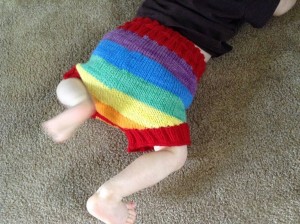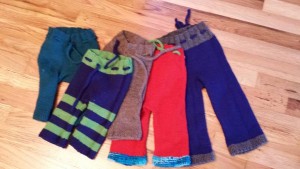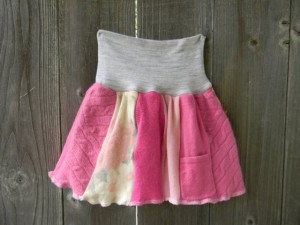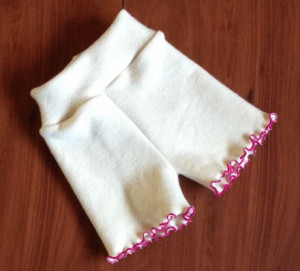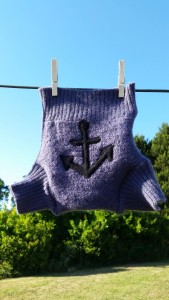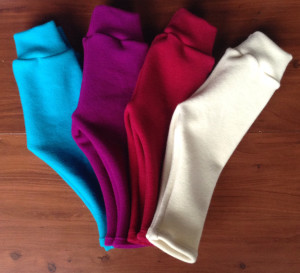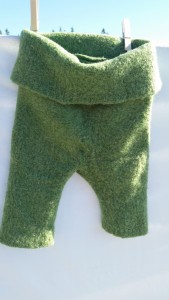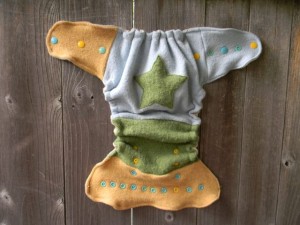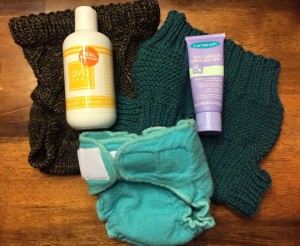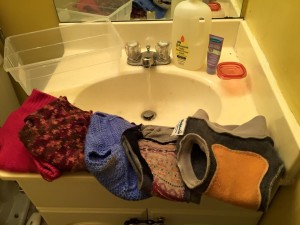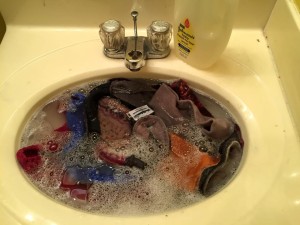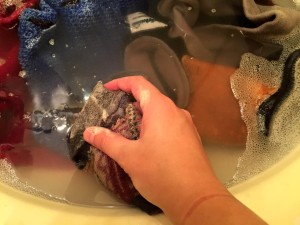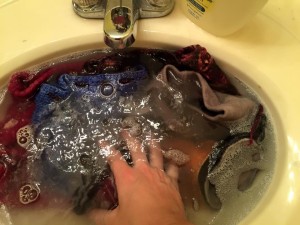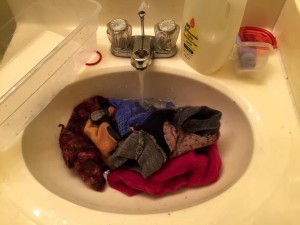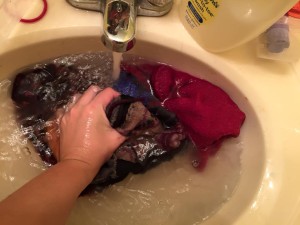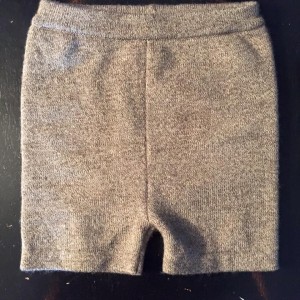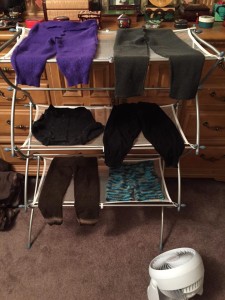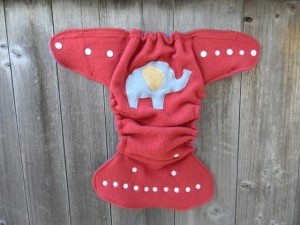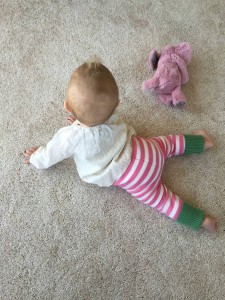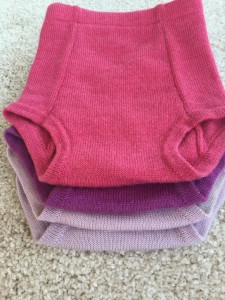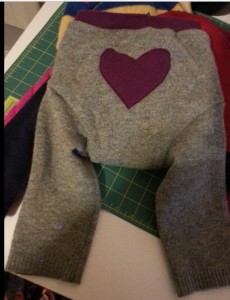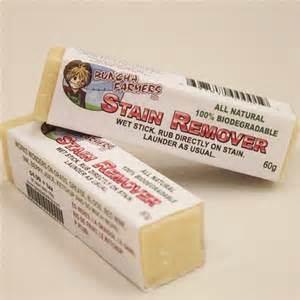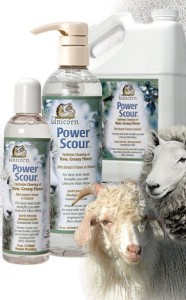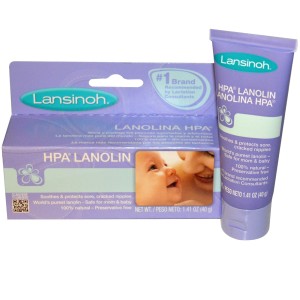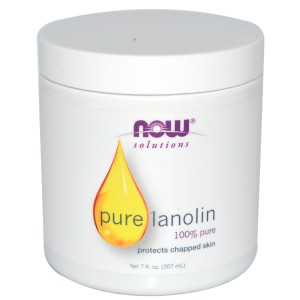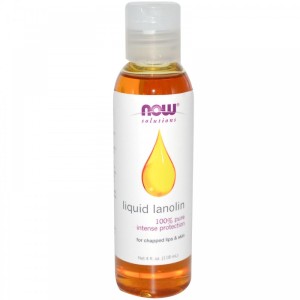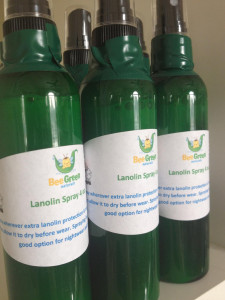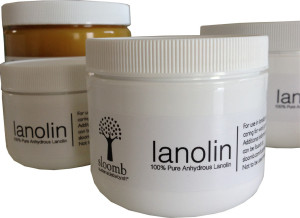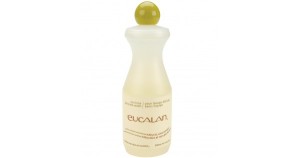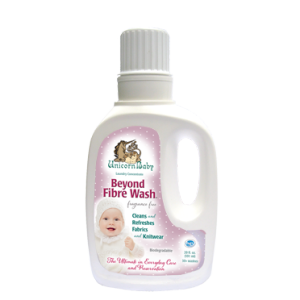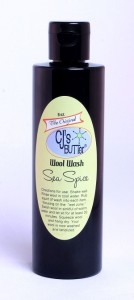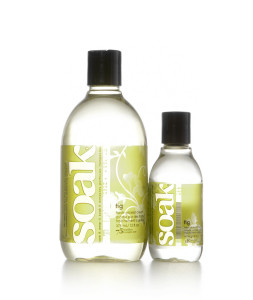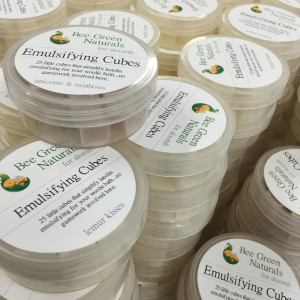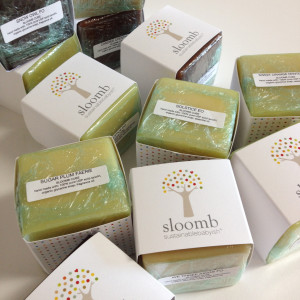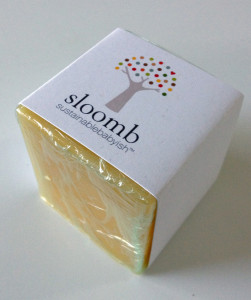Home >> How to Wash Cloth Diapers >> Wool Care
Wool. Wool seems to have a certain connotation that it is diapering for the most advanced cloth diaperer. Some other false ideas around it: it’s time consuming, difficult and only for night time diapering. I see many posts about caregivers being “nervous to take the wool plunge” or they are “scared/intimidated to try wool”. Well here comes your go-to guide on wool! By the end, we hope you’ll feel confident and ready to take that plunge. Wool is an extremely breathable and natural option – perfect for babies prone to rash and for caregivers that prefer natural fibers. It is also a common fail proof nighttime solution as a diaper cover for it’s ability to repel and absorb liquid. Add to that, that wool care is simple and typically only involves washing every 2-4 weeks and it’s quite tempting!
Types of Wool Covers
- Knits – Knits refer to diaper covers made from wool yarn. They can either be knit by hand or knit by a machine. Knit diaper covers are incredibly soft and stretchy and require hand washing to remain so. Felting is typically discouraged when using a hand knit cover, but is commonly done intentionally on machine knit covers such as Disana. Knits can become felted in the wetzone if a diaper does not contain a sufficient amount of absorbency.
- Upcycles – Upcycled wool diaper covers are diaper covers typically made from wool sweaters. They are usually the most cost efficient wool covers available. The softness, thickness and stretch of the upcycle covers can vary greatly. Some upcycles can be used successfully in nighttime diapering. Wool upcycles can either be felted or unfelted prior to construction.
- Wool Interlock – Wool interlock diaper covers are made from merino wool interlock fabric that is specially milled for use as diaper covers. Wool fabric is commonly felted prior to constructing the covers making wool interlock a very reliable option. Wool interlock is generally the easiest to care for with some being able to be machine washed on a gentle or wool cycle.
Styles of Wool Covers
- Soakers – Soakers are very popular and look similar to a pair of briefs. These are versatile and can usually be used underneath clothing.
- Shorties, Capris, Leggings, and Longies – These items are typically used as clothing year-round to simplify cloth diapering, provide excellent breathability and keep baby dry. Best of all, items can be worn until they are soiled or smelly meaning less laundry!
- Wool Wraps – Wool wraps resemble traditional diaper covers and are made with convenient snaps for quick diaper changes.
How to Use Wool as a Diaper Cover
Wool diaper covers come in a variety of types and styles, and are primarily used as a water-resistant diaper cover over a flat, prefold or fitted. Wool can be reused multiple times in a row until the wool feels cool or damp. When this occurs, lay your wool flat to dry and reuse once it is dry. It is time to wash the wool cover when it remains smelly while dry or if the wool becomes soiled.
When using wool be sure to use it over diapers that contain enough absorbency for baby. Even though wool can absorb up to 30% of its weight before feeling wet, relying too heavily on wool can lead to compression leaks.
Caring For Your Wool
Step by step performed by Jill Bristow
The safest way to ensure proper care of your wool is to always handwash but there are some types of wool that can be cared for in other ways (machine-washed cold on a gentle or a wool cycle) such as select interlock and pre-felted wool products. If you would like to know if your wool cover can be machine washed please check with the manufacturer.
To Hand-wash: Fill your sink with a few inches of lukewarm water and a drop of your favorite mild baby wash. Lay the wool in the water and gently swirl it until it is fully saturated. If your wool has any dirty spots gently manipulate the wool to work them out. Drain the dirty water and rinse the wool with fresh lukewarm water.
Supplies ready to go.
Everyone into the pool!
Scrubbing out nasty bits.
Squishy.
Transferred out one by one.
Back in for the rinse!
Squishy, squishy.
*Note: Never twist or wring wool, simply fold and press out as much water as you can.
Before After
Lanolin Bath Method: (Begin with clean wool.) Fill your sink with lukewarm water. In a small glass, fill half way with hot water and add a pea size amount of lanolin (such as pure solid lanolin or Lansinoh). Stir until lanolin is completely dissolved. Then add the lanolin solution into the sink of lukewarm water. Lay your wool in the water, pressing down to submerge it. Swirl the wool around and allow it to soak for a minimum of 15 minutes.
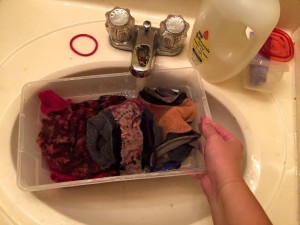
Filling for the lanolin soak.
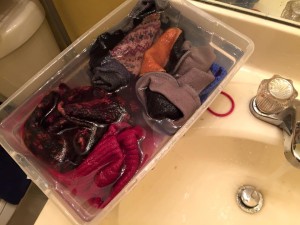
All in the water!
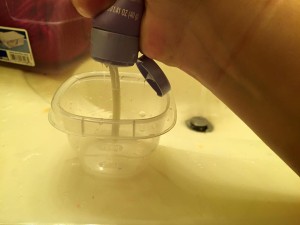
Lanolin!
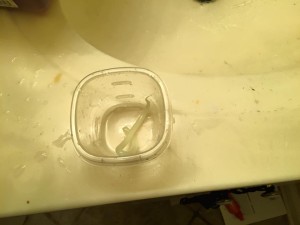
Plenty for 5 covers.
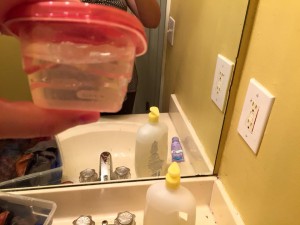
Filled with hot tap water.
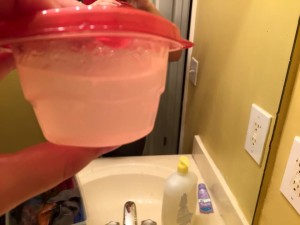
Shake, shake!
*Be careful! Contents are hot.

Ooh! Oily!
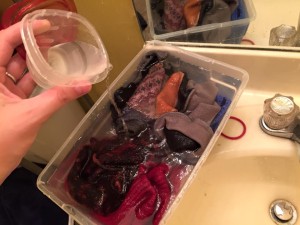
Onto the soakers!

Still oily inside, so I refilled with hot water and shook again to get all the lanolin I could out.
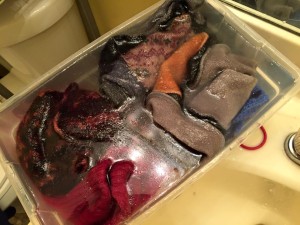
Soaking! I like to leave them there until tomorrow night and go in periodically and manipulate them so different ones are on the bottom.
A word on “emulsifying”: You’ll see this buzz word used around the wool world often and what they are referring to is the emulsification of the lanolin in the bath water to create a evenly mixed bath to avoid lano spots on your woolies or uneven lanolizing. To aid in achieving this “milky bath”. squirt a few drops of wool wash or baby soap into your melted lanolin before shaking. You can also add the few drops to the bath itself and mix the water to create that perfect milky texture. There are many products on the market as well that already have the wool wash and lanolin combined. These are often called emulsifying cubes. See below for a list of popular wool care products. “Emulsion: An emulsion is a mixture of two or more liquids that are normally immiscible (unmixable or unblendable).” –Wikipedia
*Note: Be conscious of possible dye bleeding when soaking for extended periods of time.
To Dry: lay the wool in a towel and roll it up pressing firmly to remove as much moisture as possible. Unroll and lay flat to air dry.
Dry-Lanolizing Method (May work best as a touch-up between soaks): (Begin with clean wool.) Turn your wool cover inside out and rub a pea size amount of lanolin between your hands to liquefy the lanolin. Gently massage the lanolin into the inside of the cover focusing on the wet zone.
Other popular lanolin methods include a lanolin spray, wool wash with lanolin in it, lanolin bars and lanolin cubes.
Why Wool?
- Wool is natural and comes from a renewable resource. It is the most natural fiber for covering cloth diapers.
- Wool fibers are made up of 90% keratin[i] which contributes to wool’s anti-bacterial properties[ii], making wool a great choice for babies with sensitive skin.
- Lanolin, a fatty acid secreted by sheep to protect their skin and fleece, is found in wool and inhibits the growth of bacteria and fungi largely due to its anti-microbial properties.
- Wool can both repel and absorb liquid due to the presence or absence of lanolin in the wool fiber.[iii] When lanolin is present in wool it acts as a repellant to liquid; and when lanolin is absent in wool it can absorb liquid. This allows for wool to be used as a diaper cover which repels liquid back into the diaper and also to become absorbent for use as a stay dry liner against baby’s bum.
- Wool can absorb up to 30% of its weight in moisture while still feeling dry to the touch. When there is not much lanolin present, wool will absorb moisture, distribute the moisture throughout the cover and then evaporate the moisture off slowly.
- Wool fibers contain a natural elasticity and are stronger than silk or cotton fibers. Wool fibers have an amazingly substantial quantity of amino acid crystine. This contributes to the strength of the fiber when wet, being retained by covalent bonds which are cross-linked.[iv] These features make clothing made from wool more durable and resilient than other fabrics.
- Wool diaper covers can go up to 3-4 weeks between washes. Since they only need to be washed if soiled or if they begin to smell while dry, fewer wool covers are needed than fleece or polyester covers.
- A fitted cloth diaper paired with a wool cover is the most breathable and absorbent combination making it the perfect for leak-proof nighttime diapering.
- Wool cloth diapers are versatile and can be used with flats, prefolds or fitteds to offer low cost, natural cloth diapering options.
Amazing Benefits of Wool:
- Wool is natural, renewable & biodegradable:[v] Wool is a natural fiber that is grown rather than manufactured with synthetic materials. Sheep grow a new fleece yearly. Wool fibers have a high nitrogen content and can also act as a fertilizer once it fully decomposes into the earth in a few years if left to itself as waste.
- Wool is great in hot and cold climates: Wool fibers are hygroscopic which means they are capable of absorbing air moisture, or moisture in the form of vapor.[vi] Wool fiber has an outer epicuticle layer with small pores that permit moisture to pass through the fiber and disperse into the drier climactic atmosphere.[vii] This makes wool perfect for the summer for its ventilation capability, and perfect for the winter for its insulation capability.
- Wool is static-resistant: Because wool is atmospheric, being able to absorb and disperse moisture, it cannot hold an electrical charge.[viii] This makes wool resistant to dirt particles such as dust and lint, dirt particles that would normally be attracted through static.
- Wool is impenetrable to dirt: The crimp and scales of wool fiber make wool to be an impenetrable barrier from dirt entering into the fabric.[ix] This keeps baby from uncleanliness of the skin and mommy from worry of a bath.
Common Questions:
Q: Why is my wool leaking?
A: Wool diaper covers may feel cool or damp to the touch. This is normal and the wool cover can be air dried until next use. Although wool is an extremely absorbent material, on rare occasions wool diaper covers can leak or soak through. This can be a result of a thinner wool being use or a lack of proper absorbency in the diaper. A properly lanolized wool cover will repel urine back into the diaper and when the diaper is full the wool will absorb the excess. Once the wool has absorbed to its capacity, the cover will leak. A wool cover is as good as the diaper underneath.
Q: I am feeling a cool dampness on the outside of the wool, is this leaking? Is it normal?
A: Wool passes moisture in vapor form which is how it regulates body temperature. Wool will evaporate moisture into the drier atmospheric climate. It is normal for there to be a cool, damp feeling but if the fabric is wet, then it is leaking.
Q: Why does my wool smell foul?
A: Wet wool tends to have a “barn” type smell when wet. This smell will typically go away once the cover is dry. If the cover still retains an odor while dry, it may be time for a wash.
Q: My wool cover seems to shrink with washing, is this normal?
A: With proper care, wool covers typically stretch out with wear and tighten up after a wash. If a wool cover is run through a hot wash and/or dry, you may notice further felting and shrinking. While felting is irreversible, wool fibers are weaker when wet. Therefore you may be able to salvage your wool cover by soaking in a solution of hair conditioner and water and gently stretching the cover out.
Q: Do I need to sanitize my pre-loved wool?
A: Since wool is inherently antimicrobial all that is needed is a good cleaning and relanolize.
Q: Can I use bleach on my wool?
A: Never use bleach on your wool. Sanitizing is almost never necessary as wool is inherently antimicrobial. In cases of sickness, smells or purchasing pre-loved wool simply give your wool a good washing and relanolize.
Q: How can I remove stains from my wool?
A: If a good scrubbing during a deep cleaning with wool wash products (as listed above) does not remove the stain try some of the following methods:
Lay your damp wool out in the sun. Be aware that this made fade colors and you may experience a tightening of the fibers (similar to drying a pair of jeans that relax with wear)
Buncha Farmers Stain Stick
Power Scour by Unicorn
Q: What is felting? Is it good or bad?
A: When wool fibers are subjected to a combination of heat, friction, and moisture, the result is the interlocking of the outer epicuticle layers of the fiber; thereby causing the wool to lose some of its stretching capabilities. The result of this process is known as felting. The type and brand of wool cover is a significant factor for felting consideration. Felting can be a good thing to improve the wool’s water resistant capabilities by tightening the holes in the yarn as you can see in the example below but when felting happens unintentionally you can find yourself with a pair of woolies that have shrunk and warped substantially. If the latter happens, your best hope is to soak the woolies in a cold bath with conditioner and attempt to stretch the woolies back out to their originally shape.
This is an almost new cover, you can see the holes in the crochet still. It’s not felted at all.
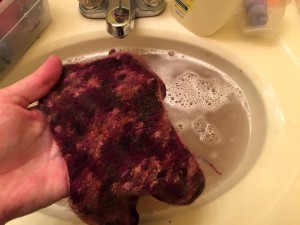
This cover is made by the same person (me) from the same yarn and same pattern but is much older. You can see how much more felted it is just from use.
*For more wool troubleshooting, join the conversation on the Fluff Love & CD Science Facebook page.
Popular Wool Care Products:
Lanolin:
Lansinoh Lanolin
Now Solid Lanolin
Now Liquid Lanolin
Baresheep Spray & Pure Solid Lanolin
Bee Green Naturals Lanolin Wool Spray
Sloomb Solid Lanolin
Wool Wash:
Johnson & Johnson Baby Wash
Eucalan
Unicorn Baby Beyond Fibre Wash
CJ’s Wool Wash
Soak Wash
Emulsifying Cubes:
Bee Green Naturals for Sloomb
Sloomb Cube
Sloombicorn Cube
About the Author:
Destani is the owner, creative designer, and seamstress of Truly Charis. Together, she and her husband run Truly Charis full-time while raising their 4 very energetic children. Destani loves to read, cook and explore new “mini-adventures” with her high-spirited little ones. She also has a passion for drafting patterns designing wool interlock covers that are both cute and functional for an easy way to cloth diaper with wool.
Photo Credits:
1. Truly Charis Skirtie 2. Just For You Baby Design Upcycled Longies 3. One Love Diaper Co Wool Wraps 4. MyEcoBaby Upcycled Longies 5. Truly Charis Twirlie 6. One Love Diaper Co Knitted Soakers 7. The Knitting Addict Rainbow Knit Soaker 8. Photo Courtesy of Jill B. Knit Soaker 9. Photo Courtesy of Evette W. Knit Longies 10. Photo Courtesy of Amy W. Knit Soaker 11. Adele Wendroff Upcycled Soaker 12. MyEcoBaby Upcycled Skirtie 13. Baresheep Upcycled Longies 14. Bella Babes Boutique Upcycled Soaker 15. Truly Charis Hand dyed wool interlock leggings & shorties 16. Truly Charis Shorties 17. Truly Charis Twirlie 18. Bella Babes Boutique Upcycled Soaker 19. Photo Courtesy of Rachel T. Upcycled Soaker 20. Truly Charis Interlock Soaker 21. BenjiApproves Upcycled Soaker 22. Photo Courtesy of Jackie B. 23. Truly Charis Interlock Leggings 24. One Love Diaper Co Interlock Capris 25. BenjiApproves Upcycle Shorties 26. MyEcoBaby Wrap 27. One Love Diaper Co Wrap 28. MyEcoBaby Wrap 29. Photo Courtesy of Kaity J. 30-36. Photos Courtesy of Jill B. 37-38. Photos Courtesy of Jackie B. 39-48. Photos Courtesy of Jill B. 49. Photo Courtesy of Allison N. 50. MyEcoBaby Wrap 51. Photo Courtesy of Kaitlyn H. 52. MyEcoBaby Upcycle Longies 53. Photo Courtesy of Kaitlyn H. 54. Photo Courtesy of Shannon U. 55. Photo Courtesy of Jackie B. 56. Bella Babes Boutique Upcycle Longies
End Notes
[i] Cardamone 1 [ii] C Tam, JJ Mun, DJ Evans, Fleiszig SM, “Cytokertins mediate epithelial innate defence through their antimicrobial properties,” PubMed 122 24 September 2012: 1 [iii] Mazow, L. B. (2014), “The Root of the Problem: On the Relationship between Wool Processing and Lanolin Production.” Journal Of Mediterranean Archaeology. 27(1) June 2014: 39. [iv] Robertson R., James, Roux, Claud, Viggins, Ken. Forensic Examination of Fibres. Philadelphia; Taylor & Francis, 1999. [v] Jeanette M. Cardamone, Alberto Nuñez, Rafael A. Garcia, and Mila Aldema-Ramos, “Characterizing Wool Keratin,” Research Letters in Materials Science, 2009, 11 May 2009: 1. [vi] Korjenic, Azra, et al. “Sheep Wool As A Construction Material For Energy Efficiency Improvement.” Energies, 8 19 June 2015: 5768 [vii] Azra 5768 [viii] Azra 5768 [ix] Azra 5768
References
Jeanette M. Cardamone, Alberto Nuñez, Rafael A. Garcia, and Mila Aldema-Ramos, (2009) Characterizing Wool Keratin. Research Letters in Materials Science, 2009, (147175), 1-5. Retrieved from http://dx.doi.org/10.1155/2009/147175
Korjenic, A., Klarić, S., Hadžić, A., & Korjenic, S. (2015). Sheep Wool as a Construction Material for Energy Efficiency Improvement. Energies (19961073), 8(6), 5765-5781. Retrieved from doi:10.3390/en8065765
Mazow, L. B. (2014). The Root o f the Problem: On the Relationship between Wool Processing and Lanolin Production. Journal Of Mediterranean Archaeology, 27(1), 33-50. doi:10.1558/jmea.v27il .33
Robertson, James R., Roux, Claud, Viggins, Ken. 1999. Forensic Examination of Fibres. Philadelphia: Taylor & Francis.
Santos, Paulo Sergio da Silva, Tinoco-Araujo, Jose Endrigo, Souza, Lucas Monteiro de Vasconcelos Alves de, Ferreira, Rafael, Ikoma, Maura Rosane Valerio, Razera, Ana Paula Ribeiro, & Santos, Marcia Mirolde Magno de Carvalho. (2013). Efficacy of HPA Lanolin® in treatment of lip alterations related to chemotherapy. Journal of Applied Oral Science, 21(2), 163-166. Retrieved July 13, 2015, from http://www.scielo.br/scielo.php?script=sci_arttext&pid=S1678-77572013000200163&lng=en&tlng=en. 10.1590/1678-7757201302308.
Tam, Connie, Mun, James J. Mun, Evans, David J., Fleiszig, Suzanne M.J. Cytokeratins mediate epithelial innate defense through their antimicrobial properties, 122, 10. Retrieved from doi:10.1172/JCI64416


